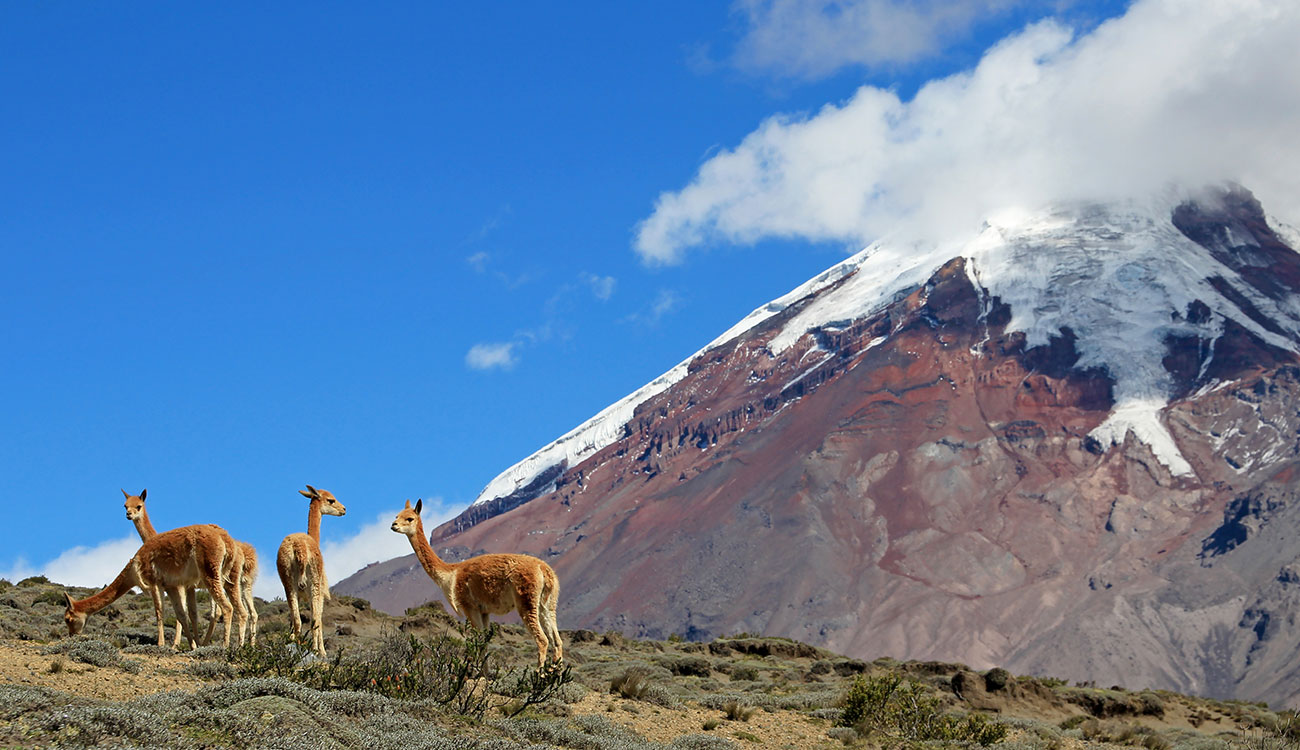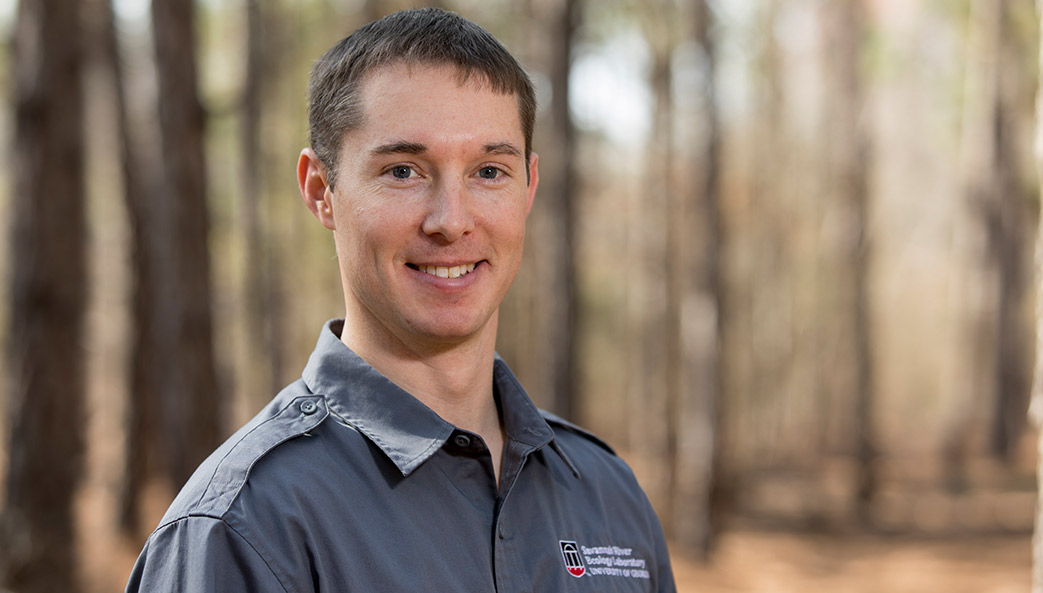“People are always attracted to the mystique engendered in mountain environments enshrouded by clouds. There are always mysterious places, like waterfalls and caves, that traditionally have been considered spiritual sources for many indigenous societies.”
– Fausto Sarmiento, professor of geography
“In the past, ecologists considered nature as pristine—what we envision to find as the balance of nature. Nowadays, no one believes that nature is in balance—people don’t talk anymore about homeostasis. They talk about fluxes, the ‘pulsing paradigm’ of Eugene Odum, called homeorhesis.”
Known as the father of modern ecology, Odum pioneered the concept of ecosystem science: the holistic understanding of the environment as a system of interlocking biotic communities. In 1998 Odum, founder of UGA’s Eugene P. Odum School of Ecology, the world’s first stand-alone college of ecology, and Sarmiento co-wrote a book in Spanish, Ecología: El Puente Entre Ciencia y Sociedad (“Ecology: The Bridge between Science and Society”), in which socioecological systems began to be theorized in mountainscapes.
Today, this holistic view is emphasized internationally in different ways that recognize the interrelationships of human and biotic systems. In Japan, for example, the concept of satoyama describes the village and mountains together as a unit. The Satoyama Initiative, an international partnership organized by the United Nations University’s Institute for the Advanced Study of Sustainability and the Institute for Global Environmental Strategies, comprises hundreds of member organizations, including Sarmiento’s montology lab at UGA, and works to realize societies in harmony with nature.
The concept of mountain systems as another part of nature in flux extends to universal metaphors about mountains as well. Meta-geographies are inserted into the human psyche at a very young age; often as early as birth, humans learn to identify what is up and what is down. Sarmiento says this verticality is imprinted into our psychological development.
“We look up every time we aspire to something,” he said. “This idea of going up to a mountain to have a clearer view or inspiration brings about these metaphors for mountains, which are even biblical epiphanies.
“Mountains can be a reflection of some hegemonic view—the Europeans who came to the Americas, for instance, wanted to keep their idea of a mountain as a threatening, foreboding image, or the wrath of God manifested in thunderstorms, landslides and eruptions.”
Though these colonial perspectives made it possible to view mountains as negative, as a forbidden place, the idea of mountains as the abode of gods is shared among indigenous nations across the Americas. Sarmiento’s 2017 book on indigeneity and sacred sites conservation includes several sacred mountains where he studied ecological legacy.
“People are always attracted to the mystique engendered in mountain environments enshrouded by clouds,” he said. “There are always mysterious places, like waterfalls and caves, that traditionally have been considered spiritual sources for many indigenous societies.”
Scientists now work to dispel certain myths about mountains—such as their being climate machines, medicine cabinets, sacred abodes of gods or repositories of biodiversity and stores of ecosystem services, Sarmiento said—and incorporate other viewpoints to try to better understand the mountainscape as a socio-ecological system.
Brasstown Bald, located in northeast Georgia, is the highest point in the state. Its visitors center is 4,784 feet above sea level, offering viewers the chance to see four states on a clear day.
A major effort is underway, for example, to look at mountains as the last frontier in many tropical areas around the world. Mountaintop glaciers have disappeared or are very rapidly retreating, meaning that animals and plants associated with life on mountainsides are being pushed upward, and the rise in temperatures causing such deglaciation will one day leave such species with nowhere else to go. Mountain hamlets, communities and even large cities associated with tropical glaciers could potentially be deprived of water in our lifetime.
“Somehow, mountains are the metaphorical canaries of global climate change in continental spaces,” Sarmiento said. “We correlate climate change with glacial melt at the poles, as well as with sea level rise. But throughout the tropics, in particular, the disappearance of mountaintop glaciers is quite impactful.”
Sarmiento’s scholarship reflects both continuing shifts in scientific trends and his experience growing up in the Tropical Andes. One of his lines of inquiry is the pioneering work of the early 19th-century naturalist and explorer Alexander von Humboldt, who advocated for long-term, systematic, geophysical measurements and saw the need for an approach to science that could account for the harmony of nature amid its diversity.
Von Humboldt’s expeditions to the Americas also took him to the Andes, and his Essays on the Geography of Plants (1807) and what is known as the “Chimborazo Profile” showed the three regions: coastal, mountains and Amazonia. Humboldt’s description of mountain belts, a system of alpine lines of vegetation based on altitude, has long persisted.
“Growing up in Ecuador, I was not able to see those belts,” Sarmiento said. “When I went from the highlands to the lowlands, everything I observed was in transition or clines. So, I started to question what I was learning that followed the European tradition of science. I wanted to find these horizontal lines in the mountains, but I couldn’t find them.”
The absence of the vegetation belts motivated the inquiry that has led to a new paradigm about lowland-highland interaction and manufactured landscapes. Instead of vertically segmented altitudinal belts, Sarmiento posits the existence of an ecotonal continuum along the gradient, reflecting an ecological legacy at each point along that continuum.
Sarmiento advocates for developing a new system to understand mountains. He says that bringing together the knowledge from Western science and its allowed humanistic perspective, history, religion and the mysticism of non-Western science—particularly how elders in native communities see mountains—is vital for convergent mountain science. This topic is explored in his 2020 book, The Elgar Companion to Geography, Transdisciplinarity and Sustainability.
“Mountains are actually socio-ecological production landscapes that have to be managed as such,” Sarmiento said. “They are a hybrid, culture-nature reality that cannot be separated.”







